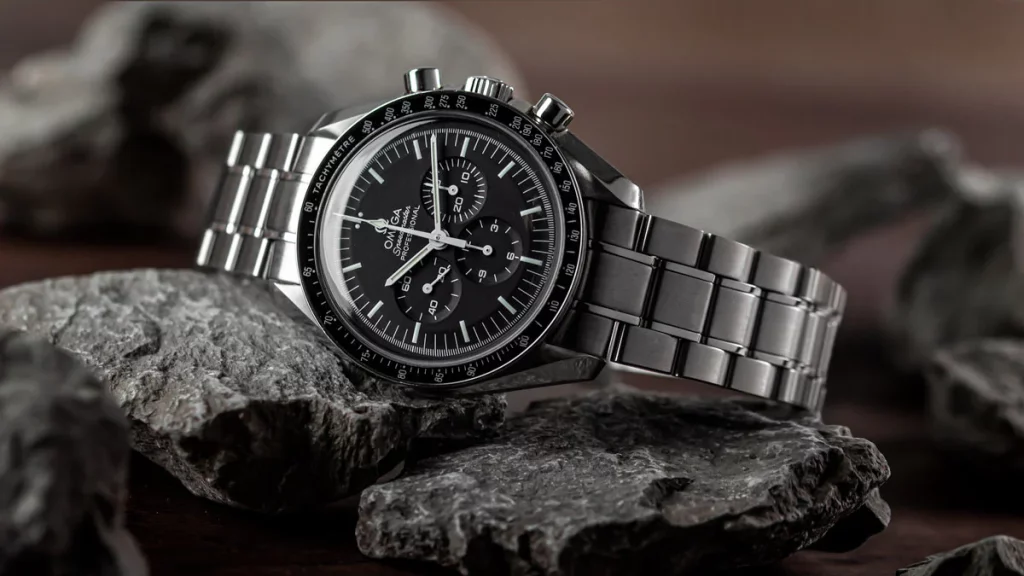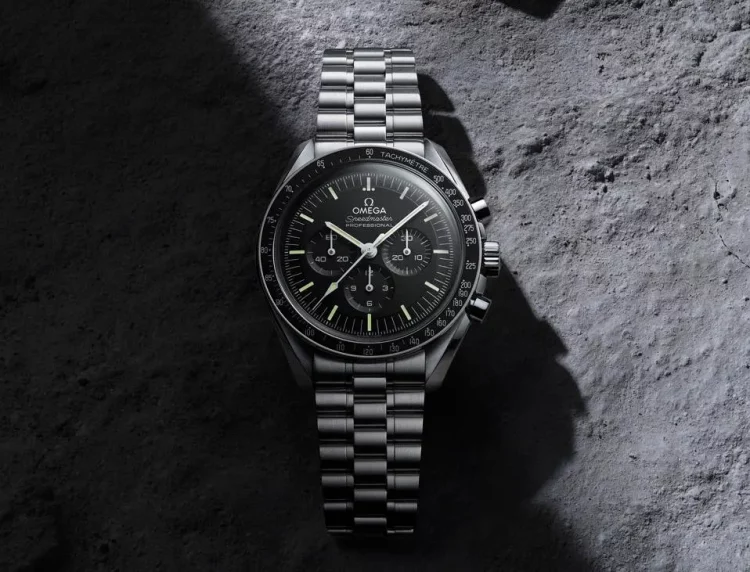Omega Watches
Omega, a name synonymous with precision, durability, and luxury, has consistently been at the forefront of horological advancements for over 170 years. Founded in 1848 by Louis Brandt in La Chaux-de-Fonds, Switzerland, Omega has long been recognized not only for its exquisite craftsmanship but also for its groundbreaking technological innovations. From the first automatic chronometer to space travel and advanced escapement technologies, Omega has continuously pushed the boundaries of what’s possible in watchmaking.
This article explores the evolution of Omega’s technology and innovations, breaking down key technological advancements in the company’s movements, materials, design, and functionality. We’ll examine how Omega has continually adapted to changing times and set new standards in the luxury watch industry.
I. The Foundation of Omega: A Legacy Built on Precision
Before diving into the advanced technologies, it’s important to understand the context in which Omega’s innovations emerged. Omega’s commitment to precision and high-quality craftsmanship has been central to its success from the outset. The brand quickly became recognized for its reliable timekeeping and groundbreaking watchmaking achievements.
1. The Birth of Omega’s Technological Innovations
Omega’s initial success lay in producing highly accurate pocket watches. Louis Brandt sought to create timepieces that would deliver exceptional precision. This drive led to Omega’s first major achievement: the “Omega” name itself, which became synonymous with Swiss watchmaking excellence. The brand soon garnered attention for its chronometric precision, receiving numerous awards at prestigious watchmaking competitions.
II. Omega’s Breakthrough Movements: Advancing the Art of Timekeeping
One of Omega’s most significant contributions to horology is its relentless pursuit of improving and innovating watch movements. The movement is the heart of any watch, and Omega has developed numerous in-house movements that offer precision, durability, and groundbreaking technical features.
1. The Co-Axial Escapement: A Revolutionary Development
In 1999, Omega introduced the Co-Axial escapement, an innovation that fundamentally changed the way mechanical watches functioned. Invented by George Daniels, the Co-Axial escapement is considered one of the most significant developments in horology since the invention of the balance spring.
- How the Co-Axial Escapement Works: The Co-Axial escapement reduces friction in the movement, improving accuracy and longevity by extending the intervals between servicing. Traditional escapements rely on two gear wheels that wear down over time. The Co-Axial system utilizes a three-wheel mechanism that minimizes the frictional contact points, leading to more stable performance.
- User Evaluation: Watch enthusiasts and owners of Omega watches with Co-Axial movements report that their timepieces maintain consistent accuracy over time, requiring less frequent servicing compared to traditional escapement designs.
2. The Omega Master Chronometer: Mastering Precision and Magnetism
In 2015, Omega introduced the Master Chronometer certification, a rigorous testing standard that takes watchmaking to an even higher level. Watches bearing this certification have undergone a series of tests set by the Swiss Federal Institute of Metrology (METAS), ensuring they meet the most demanding performance criteria.
- Master Chronometer Features: Omega’s Master Chronometer movements are resistant to magnetic fields up to 15,000 gauss—a level of protection that far exceeds industry standards. This is achieved by incorporating anti-magnetic materials in the movement, such as Sedna gold and Niobium alloys.
- User Evaluation: Many users find the magnetic resistance particularly appealing, especially those living in environments where electronics and technology emit strong magnetic fields that can affect the accuracy of traditional watches.
3. The Omega Speedmaster: A Watch Built for Space
The Omega Speedmaster is perhaps one of the most well-known models in the Omega collection, partly because of its association with NASA and its role as the official moonwatch. The Speedmaster’s technology has not only revolutionized chronograph features but also exemplifies Omega’s commitment to creating durable, high-performance timepieces.
- The Moonwatch and Space Exploration: In 1965, NASA selected the Omega Speedmaster to accompany astronauts on their historic space missions. The watch was chosen for its durability, precision, and ability to withstand the extreme conditions of space travel. Over the years, it has become a symbol of Omega’s technical prowess, with the brand continuing to innovate and refine the Speedmaster’s design and functionality.
- User Evaluation: The Speedmaster’s design, which includes a tachymeter scale, chronograph function, and sturdy stainless steel case, makes it a versatile watch for both technical users and collectors. Reviews from space exploration enthusiasts highlight the ruggedness of the model, while others admire its elegant yet functional design.

III. Omega’s Cutting-Edge Materials: Innovations for Durability and Performance
Beyond movements, Omega has invested significantly in the development of advanced materials that enhance the durability, longevity, and aesthetic appeal of its timepieces.
1. Omega’s Use of Ceramic: A Revolution in Watchmaking
Omega has pioneered the use of ceramic in watchmaking, especially with the release of the Omega Seamaster Planet Ocean 600M. Ceramic is not only highly durable but also scratch-resistant and lightweight, making it an ideal material for luxury watches that need to withstand the rigors of daily wear.
- How Omega Uses Ceramic: Omega uses high-tech ceramic for its watch cases and even the bezel inserts on certain models. The ceramic components are highly polished and resistant to both scratches and fading.
- User Evaluation: Many users have expressed their satisfaction with the scratch resistance and lightweight feel of ceramic Omega watches. The Seamaster Diver 300M featuring a ceramic bezel is often cited as one of the brand’s most durable and stylish watches.
2. Sedna Gold: A Unique, Durable Material
Omega has also developed its own proprietary alloy, Sedna gold, which combines gold, copper, and palladium to produce a distinctive rose-gold color that is resistant to fading and tarnishing.
- The Benefits of Sedna Gold: This material is more resistant to oxidation than traditional gold alloys, allowing Omega to create beautiful watches with long-lasting color that maintains its shine over time.
- User Evaluation: Omega collectors who own timepieces with Sedna gold, such as the Omega Constellation, appreciate the material’s elegance and its ability to retain its color and luster over many years.
IV. Omega’s Technological Innovations in Watch Design
While Omega’s mechanical and material technologies are groundbreaking, the brand has also been innovative in its design language and the way it approaches user experience.
1. The Use of Pioneering Technology in Design
Omega has continually redefined watch design through its innovative technology. For instance, the Seamaster Aqua Terra collection features a “teakwood” dial, which was developed using advanced CNC (computer numerical control) machines to create precision grooves that mimic the appearance of wood.
- Innovative Design Features: Omega’s watches also incorporate wave-patterned dials, screw-down crowns, and rotating bezels that contribute to the functionality and appeal of the watch.
2. Smartwatches: The Future of Omega
As the world of horology continues to evolve, Omega has begun to embrace smartwatch technology while still maintaining its roots in traditional watchmaking. In collaboration with Swatch Group, Omega introduced the Omega x Swatch partnership, bringing forth a line of watches that integrates cutting-edge smartwatch technology with Omega’s hallmark craftsmanship.
- User Evaluation: Early reviews of Omega’s entry into the smartwatch market have been positive, with users impressed by how the brand has managed to blend traditional watchmaking with modern technology.
V. The Impact of Omega’s Technological Advances on the Watchmaking Industry
Omega’s technological contributions have significantly impacted the luxury watch industry, from the introduction of highly accurate movements to innovative materials that challenge traditional notions of durability and elegance.
1. Setting Industry Standards
Omega’s innovation sets the benchmark for other luxury watch brands. Technologies such as the Co-Axial escapement and Master Chronometer certification have forced the industry to reevaluate quality standards in watchmaking.
2. Creating a Stronger Market Presence
By combining traditional Swiss craftsmanship with cutting-edge innovations, Omega has cemented its place as a leader in horology. As more brands adopt similar technologies, Omega continues to stand out for its consistent pursuit of excellence.
VI. Conclusion: Omega’s Technological Legacy
Omega’s legacy in watchmaking technology is defined by its commitment to precision, durability, and innovation. The brand has revolutionized watch movements, created durable materials that withstand the test of time, and set industry
standards with groundbreaking designs and performance. With each new technological development, Omega continues to build on its rich history while shaping the future of horology.
For those seeking a timepiece that combines state-of-the-art technology with elegance and reliability, Omega remains a top contender in the world of luxury watches. Whether it’s the Co-Axial escapement, Master Chronometer certification, or high-tech materials, Omega’s innovations make its watches more than just timekeepers—they are true marvels of modern engineering.





































